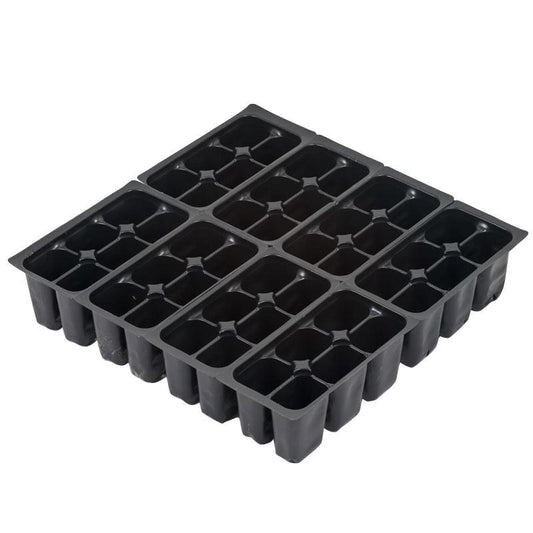
Seed Starting Trays for Healthy Seedlings
Set your garden up for success with our selection of seed starting trays, seedling trays, and planting trays. Whether you're growing vegetables, herbs, or flowers, our durable standard trays and eco-friendly biodegradable seed starting trays give your seeds the strong start they need. For sturdy support in nursery and propagation setups, explore the reliable Deepot Support Tray, one of our most popular options.
Types of Seed Trays & Components
Standard Seed Trays
- Includes 1020 trays, mesh options, and tray seedling formats
- Available with or without drain holes for custom watering
- Ideal for compact indoor setups or greenhouses
Biodegradable Pots & Trays
- Choose from peat pots, newspaper pots, and fiber-based biodegradable pots
- Transplant directly into the soil to reduce shock and waste
Inserts & Plug Trays
- Compatible with most garden trays and standard trays
- Easy to label and reuse across seasons
Humidity Domes & Heating Accessories
- Use humidity domes, heat mats, and grow lights for better germination control
- Combine with your seed starter and seed starting mix for optimal results
Why Use Seed Starting Trays?
Using seed trays and starting trays allows you to:
- Start seeds in a controlled environment with consistent warmth and moisture
- Maximize space with organized, efficient seedling tray layouts
- Transplant easily with minimal root disturbance using cell trays or biodegradable pots
- Customize setups with inserts, planting trays, and dome lids
Seed Starting Tips
- Use a fine-textured seed starting mix for aeration and moisture retention
- Keep soil evenly moist and avoid overwatering—drain holes help
- Place under grow lights and on heat mats to maintain ideal conditions
- Vent humidity domes daily to reduce mold risks
- Label each seedling tray with plant type and sow date
For deep-rooting seedlings such as citrus or forestry starts, pair your trays with our durable 4 X 10" Anderson Band for proper vertical root development.
Learn more:
Best-Selling Products
-
1020 Seed Starting Tray – Durable and reusable
-
Excel Plug Tray (50 Cells) – Uniform growth for seedlings
-
Fiber Grow Greenhouse Kit – Ready-to-use with biodegradable pots
-
Greenhouse Dome Lids – Control humidity at different heights
-
Speedling Drain Tray – Promotes healthy roots
-
6-Pack & Jumbo Inserts – Compatible with standard trays
From biodegradable seed starting trays to complete seed starter kits, we provide everything you need to grow strong, healthy plants from seed. Start your garden right with the best seedling trays, inserts, and accessories.
Browse our seed trays and planting trays collection today.
 Sold out
Sold out





















